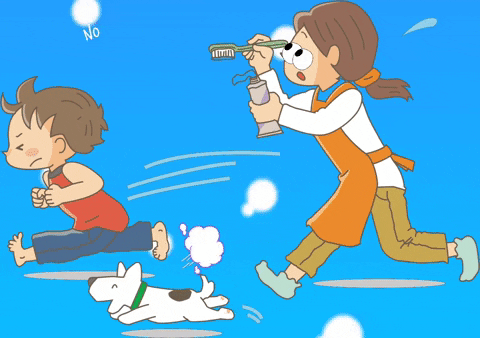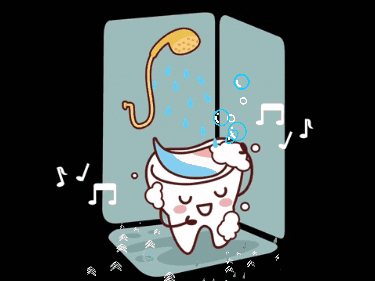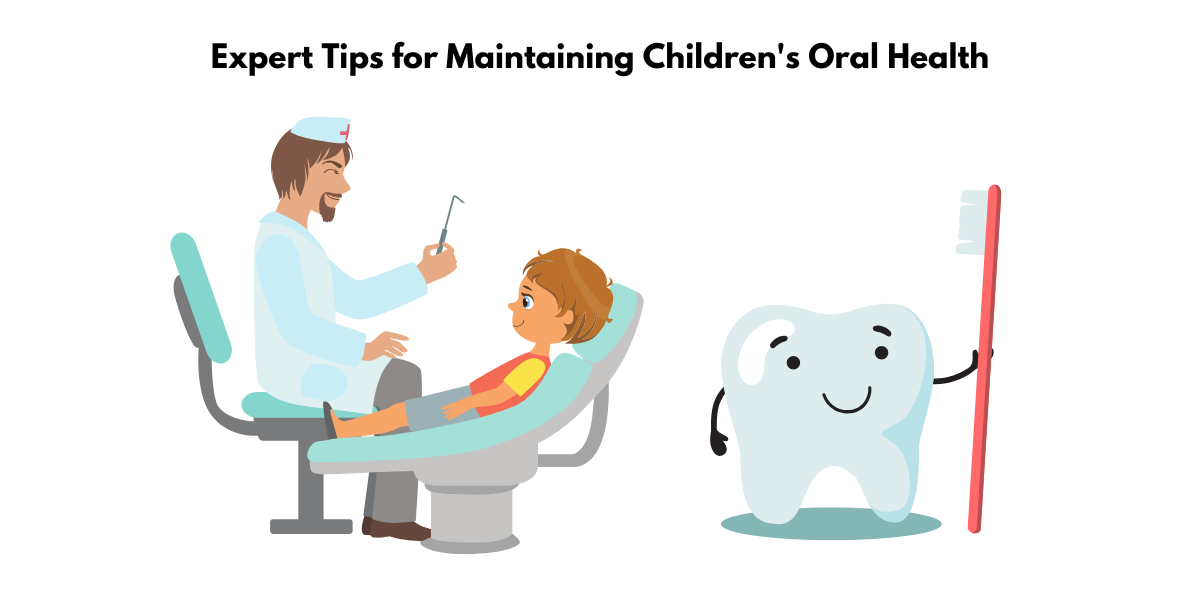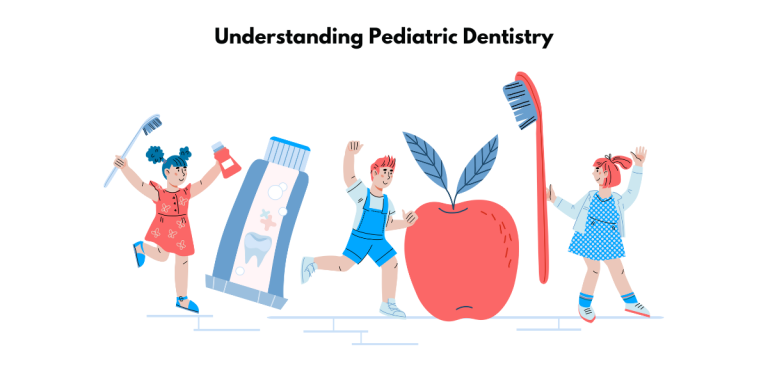Comprehensive Guide to Pediatric Dental Care: Expert Tips for Ensuring Optimal Oral Health in Children
Introduction to Pediatric Dental Health
Understanding the Importance of Oral Care in Children
Starting your child on the journey to excellent dental health is more than just a ritual—it’s a cornerstone for their overall well-being. Oral care in children is pivotal, as it prevents a host of potential illnesses, some of which can affect more than just the mouth. Consistent oral hygiene helps ward off conditions like gum disease, which is linked to heart disease and diabetes later in life. Remember, a healthy mouth is a strong indicator of a healthy child.
The Foundations of a Healthy Smile for the Young Ones
The foundations of a healthy smile for your little ones are laid out by incorporating good habits early. This starts with understanding that babies’ gums need care even before their first teeth emerge. Use a soft, damp cloth to gently wipe their gums after feedings. As the teeth begin to appear, switch to a small, soft-bristled toothbrush with a rice-sized amount of fluoride toothpaste, gradually increasing to a pea-sized amount as they grow. Nutrition also plays an essential role, so ensure their diet supports dental health—plenty of calcium, low in sugar. Plus, reinforce these habits with positive reinforcement, making dental care a fun part of their daily routine.

Setting Up Strong Dental Habits Early-On
The Role of Parents and Caregivers in Pediatric Oral Health
As a parent or caregiver, you are the frontline defense in your child’s oral health. Your approach to their dental care sets the stage for their habits into adulthood. Start by being a role model; let them see you taking care of your own teeth. Schedule their first dental visit by their first birthday, as recommended by pediatricians, which sets the tone for regular checkups. Additionally, be vigilant about their daily dental routine, ensuring they brush twice a day and floss once a day as they grow older. Lastly, educate them on the consequences of poor dental hygiene, while also celebrating milestones and improvements.
Daily Routines to Support Your Child’s Dental Hygiene
Establishing a reliable daily routine can greatly support your child’s dental hygiene and pave the way for a lifetime of healthy habits. Start with wiping your infant’s gums twice a day and progress to brushing your teeth as soon as the first one emerges. Twice-a-day brushing with fluoride toothpaste appropriate for their age is non-negotiable, as is flossing once their teeth start to touch. Make these activities enjoyable and interactive—try using a timer or a fun song to ensure they brush for a full two minutes. Nighttime routines are especially crucial as sleeping with a clean mouth reduces the risk of cavities. And remember, celebrate each successful dental hygiene session to encourage them to keep at it!
From First Teeth to Braces: A Timeline of Pediatric Dental Milestones
What to Expect During Teething and Tooth Eruption
Teething can be a testing time for both children and parents, with the first teeth usually appearing around six months of age. You might notice your child is fussier than usual, with a tendency to chew on objects, drool more, or even lose their appetite. Tooth eruption is a natural process, but it can cause sore gums—gently rubbing your child’s gums with a clean finger, offering a teething ring, or using a cold washcloth can provide relief. Keep track of the arrival of each tooth with a tooth eruption chart, and maintain regular dental visits to ensure they are growing correctly.
Managing the Transition to Orthodontic Care
Transitioning to orthodontic care is a significant milestone in pediatric dental health. It usually becomes a topic of discussion around age 7, when children have a mix of baby and permanent teeth. At this stage, orthodontists can evaluate if there are any developing issues such as misalignment or bite problems. If treatment is recommended, options may range from traditional braces to more contemporary choices like clear aligners, depending on your child’s specific needs. Encourage open dialogue with your child about the process to ease any concerns they might have, and be sure to emphasize the long-term benefits of orthodontic care for their confidence and health.

Professional Pediatric Dental Services
An Overview of Treatments and Services Available
A pediatric dental practice offers a comprehensive array of treatments and services tailored to meet the unique needs of young patients. These services include not only routine wellness checks and cleaning but also more specialized care like orthodontic treatment for aligning teeth and bites. Restorative services, such as fillings for cavities, are available, along with preventative measures like fluoride treatments and dental sealants. For cases needing more intensive interventions, digital X-rays, general anesthesia, and sedation are utilized to ensure the comfort and safety of children during treatments. Remember, pediatric dentistry is designed to offer a full spectrum of care from infancy through adolescence, including for those with special needs.
How Regular Checkups Prevent Future Problems
Regular dental checkups are pivotal in safeguarding your child’s oral health and averting future dental issues. During these visits, dentists can detect potential problems early on, such as the first signs of tooth decay, gum disease, or developmental concerns that could lead to more serious oral health issues down the line. These appointments are also an opportunity for dental professionals to apply preventive treatments like fluoride varnishes and sealants that significantly reduce the risk of cavities. Plus, they’re a great time to reinforce good oral hygiene practices and tweak daily routines as necessary. Consistent checkups mean minor problems can be caught and treated early, often saving your child from more complex procedures in the future.
Overcoming Challenges with Pediatric Dentistry
Tips for Making Dental Visits Positive
Transforming a dental visit into a positive experience can lead to lifelong comfort with dental care. Start by scheduling appointments at times when your child is typically at their best, such as well-rested mornings. Introduce your child to the dentist’s office in a friendly manner, perhaps through an advance casual visit or using books and videos about dental visits. During appointments, praise and reassure your child for their bravery and cooperation. Dentists specializing in pediatric care often use playful language, and distraction techniques, and offer rewards after the visit, all of which contribute to a more enjoyable experience. Remain calm and supportive throughout the visit, as your child will look to you for cues on how to feel and react.
Addressing Common Childhood Dental Concerns
Tackling common childhood dental concerns promptly can alleviate anxiety and prevent complications. One prevalent issue is tooth decay, which can be mitigated by limiting sugary snacks and drinks, as well as regular brushing and flossing. If your child complains of tooth pain, schedule a dentist appointment to determine the cause—timely intervention is key. Thumb sucking is a normal habit for infants, but if it continues beyond the age of four, it could impact tooth alignment and bite; consult with your dentist for strategies on how to gently wean your child off this habit. For children engaging in sports, protect their teeth with a proper mouthguard to prevent injuries. If dental anxiety is a hurdle, work closely with your dentist to create a care plan that soothes and builds confidence in your child.

Innovative Pediatric Dental Care Techniques
Advanced Treatments for Pediatric Patients
The field of pediatric dentistry is constantly evolving, introducing advanced treatments that are both effective and less invasive. Laser dentistry, for instance, allows for procedures with minimal discomfort and faster healing times. For children particularly anxious about dental work or with special needs, sedation dentistry ensures a stress-free experience. Dental materials have also improved, with tooth-colored fillings and crowns now the norm, ensuring restorative work is both durable and aesthetically pleasing. Should your child require orthodontic treatment, there are now more discreet and convenient options, like Invisalign for teens. It’s exciting to see how these advancements are making pediatric dental care more accommodating and less daunting for children.
The Impact of Technology on Pediatric Dentistry
The impact of technology on pediatric dentistry cannot be understated—it’s revolutionized how dental care is provided to children. Digital X-rays now offer detailed images with less radiation exposure, while 3D imaging and printing facilitate precise treatment planning and the creation of custom dental appliances. Electronic patient records improve the efficiency and accuracy of managing health information. Even in educating young patients, interactive apps and games make learning about dental hygiene an engaging activity. These technologies not only enhance the accuracy and comfort of dental procedures but also serve to create a more inviting and less intimidating atmosphere for young patients.
Happy Smiles Stories: Testimonials from Satisfied Families
Success Stories from Our Pediatric Dental Clinic
The testament to any pediatric dental clinic’s success lies in the smiles and stories of its young patients and their families. Heartwarming tales of transformations abound—children who once entered the clinic with fears leaving with confidence boosted and dental anxieties conquered. Success stories range from overcoming challenging procedures with ease, thanks to the gentle touch and patient guidance of the clinic staff, to the pride of showing off a newly corrected, healthy smile after orthodontic treatment. These narratives not only serve as a testament to the clinic’s dedication to pediatric oral health but also inspire and reassure other parents about the positive outcomes that expert pediatric dental care can provide.
Why Trust Matters in Pediatric Care
Trust is the bedrock of pediatric care, particularly in dentistry, where fears and anxieties can easily take root. A dental clinic that earns the trust of both parents and children does so by demonstrating compassionate care, clear communication, and consistent follow-through. Trust is built when a child feels heard and comforted, and when parents see a genuine interest in their child’s well-being. Creating an environment where children feel safe and parents feel informed and involved is essential. This trust leads to better cooperation during visits, more effective care, and ultimately, healthier outcomes. It’s a virtuous cycle that turns first-time patients into lifelong clients who know their smiles are in good hands.

FAQ: Expert Answers to Common Pediatric Dental Questions
How Can Dental Sealants Help My Child?
Dental sealants are a fantastic way to protect your child’s teeth against cavities. These thin, protective coatings are applied to the chewing surfaces of the back teeth, where most cavities in children are found. Sealants work by shielding these vulnerable areas from food particles and plaque. They are particularly beneficial for children who are still mastering their brushing skills. Application is quick and painless and can safeguard your child’s teeth for many years. The best part? Sealants have been shown to reduce the risk of decay in molars by up to 80%.
When Should Orthodontic Treatment Begin for My Child?
Orthodontic treatment timing is key for optimal results. The American Association of Orthodontists suggests an initial evaluation at the first sign of orthodontic issues, or no later than age 7, even if the child still has some baby teeth. This early check can help to identify any potential problems with jaw growth and emerging teeth while some baby teeth are still present. Starting treatment at the right time can reduce the need for more invasive treatments later on. It’s not about getting braces on as soon as possible but rather planning for the best long-term approach for your child’s smile.
- Comprehensive Guide to Pediatric Dental Care: Expert Tips for Ensuring Optimal Oral Health in Children - February 3, 2025
- Poor Teeth Enamel: Unveil Causes and Treatments for Loss of Enamel or Enamel Hypoplasia - January 12, 2024
- The Best Toothpaste for Bad Breath: Which Toothpaste is the Best for Fresh Breath? - December 6, 2023


